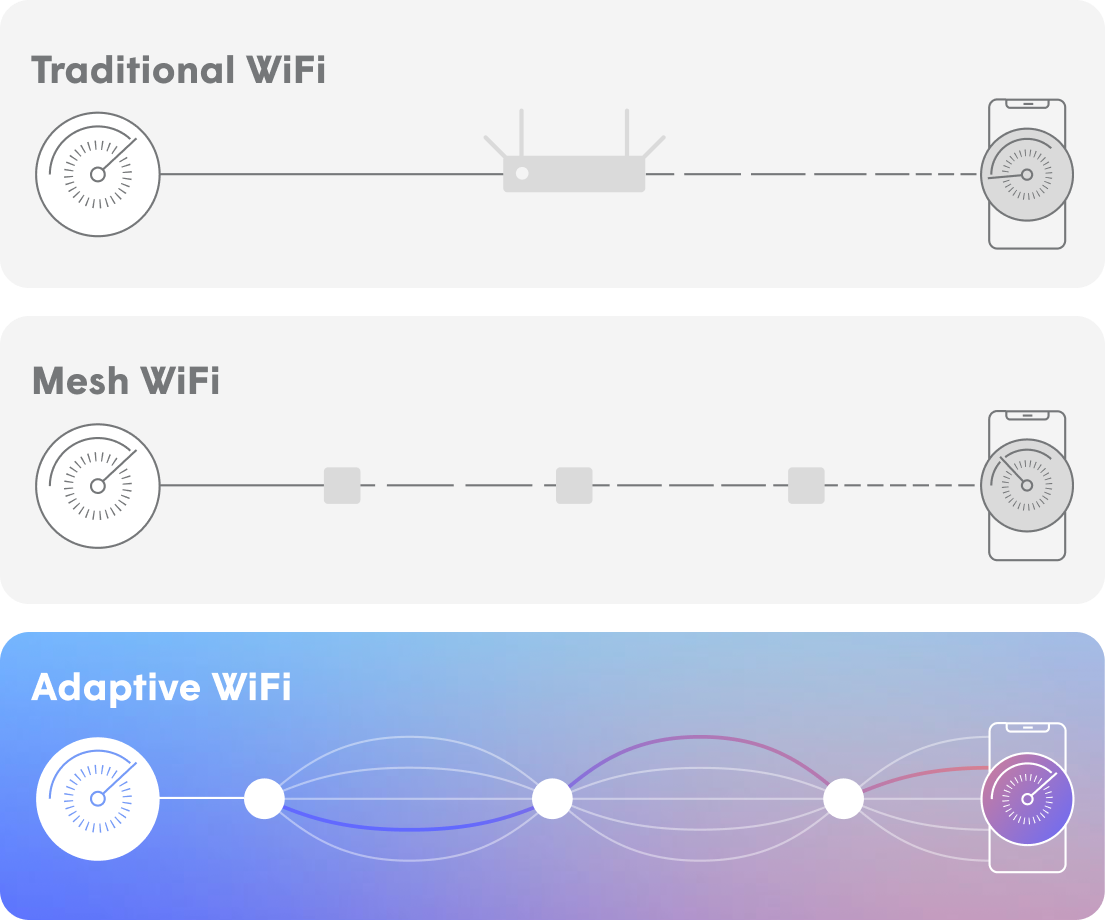How to boost WiFi speed: The future of home internet
In today's digitally connected society, "How's the WiFi?" has become as common as questions about the weather. At home, your WiFi network now determines a good portion of your quality of life. From smoothly running a remote office to enabling smart home devices to ensuring your entire family can stream their favorite media and more, strong and uninterrupted WiFi is the foundation of daily work, play, chores, security, and more. So, how has WiFi evolved to keep pace with the times? Here's everything you need to know about how to boost WiFi speed in your smart home.
Traditional vs. adaptive WiFi
One of the most common questions about WiFi is the role of the router: Does a router give you faster internet? Will a better router improve internet speed? With old-school WiFi networks, the router is the end-all, be-all. The router gets its juice from an Ethernet cable or by tapping into cellular networks—all WiFi in your home emanates from this one point. Mesh WiFi is the next step up from traditional, single-router-based networks. These systems work by distributing WiFi throughout your entire home via strategically placed nodes. But like traditional WiFi, they're static networks, meaning they don't adapt to your usage habits.  With the growth of the Internet of Things (IoT) and other "always-on" devices that rely on wireless signals to work, adaptive WiFi is increasingly the status quo. As its name suggests, adaptive WiFi automatically maps out usage in your home in order to create the most comprehensive, seamless, and optimal network for your unique needs. Plume's HomePass to gauge your home's WiFi needs and adjust accordingly. Rather than searching for the best wireless router for multiple connections, an adaptive network distributes WiFi when and where you need it for the best possible connectivity.
With the growth of the Internet of Things (IoT) and other "always-on" devices that rely on wireless signals to work, adaptive WiFi is increasingly the status quo. As its name suggests, adaptive WiFi automatically maps out usage in your home in order to create the most comprehensive, seamless, and optimal network for your unique needs. Plume's HomePass to gauge your home's WiFi needs and adjust accordingly. Rather than searching for the best wireless router for multiple connections, an adaptive network distributes WiFi when and where you need it for the best possible connectivity.
How to boost WiFi speed
Having a nice smart home is about more than how many shiny devices you've got (the average Plume user, by the way, has about 14). It's also about the strength and flexibility of the WiFi network that underpins the connected ecosystem. Here are a few of the most common and effective ways to boost WiFi in your smart home:
- How do WiFi extenders work? In router-based WiFi, range extenders can carry your network to places in your home that typically receive a poor signal.
- WiFi extender vs. booster: While extenders distribute a signal more evenly throughout your home, boosters strengthen the signal at a specific access point. However, neither typically delivers enough power to provide a long-term fix for connectivity issues like performance dips or usage-related slowdowns.
- Plume HomePass: HomePass is an adaptive WiFi network used in more than 35 million homes today. It works with your existing modem-router combination, creating a smart network that intelligently reacts to the areas where you need the most coverage.
HomePass is specifically designed for the modern world's internet needs—needs that are constantly evolving. For example: Let's say you're videoconferencing for work in the upstairs study while the kids are streaming shows downstairs, and your spouse is plugging away on the Peloton in the garage. An adaptive WiFi system channels the appropriate level of connectivity to each of these spaces, ensuring everyone has the bandwidth they need for a seamless work, entertainment, or exercise experience. Learn more about Plume today and see if it's the right option for you and your home.
